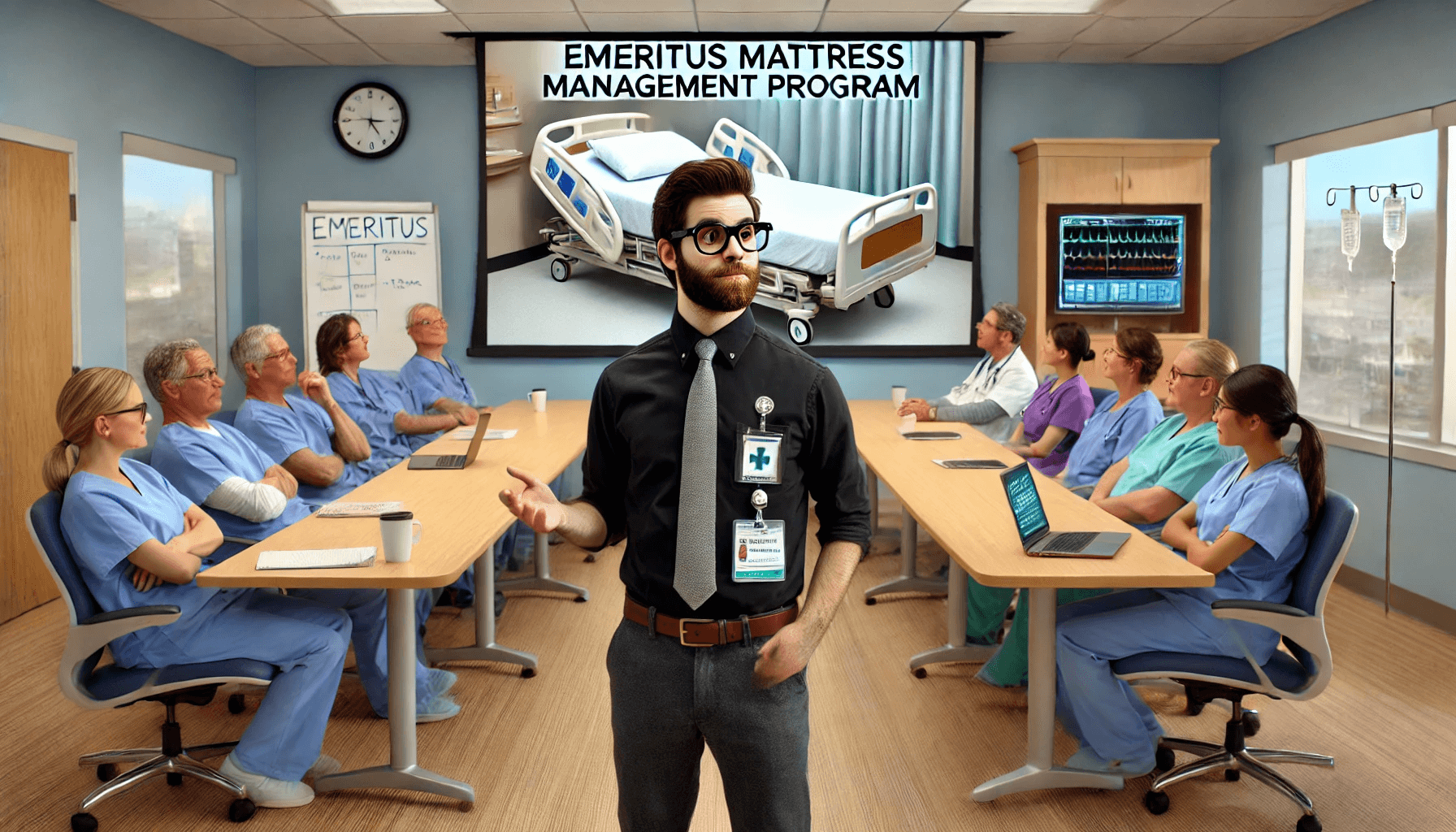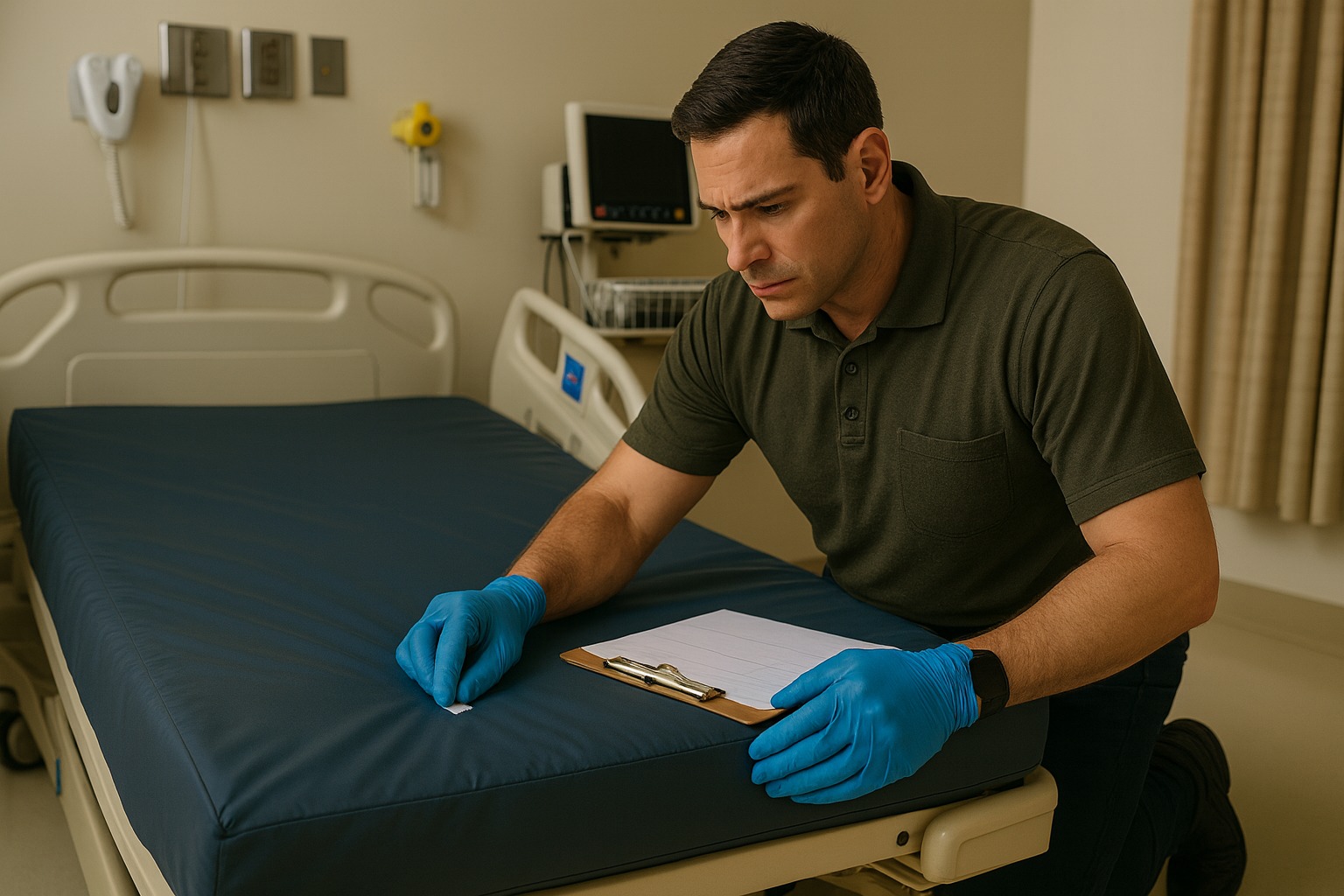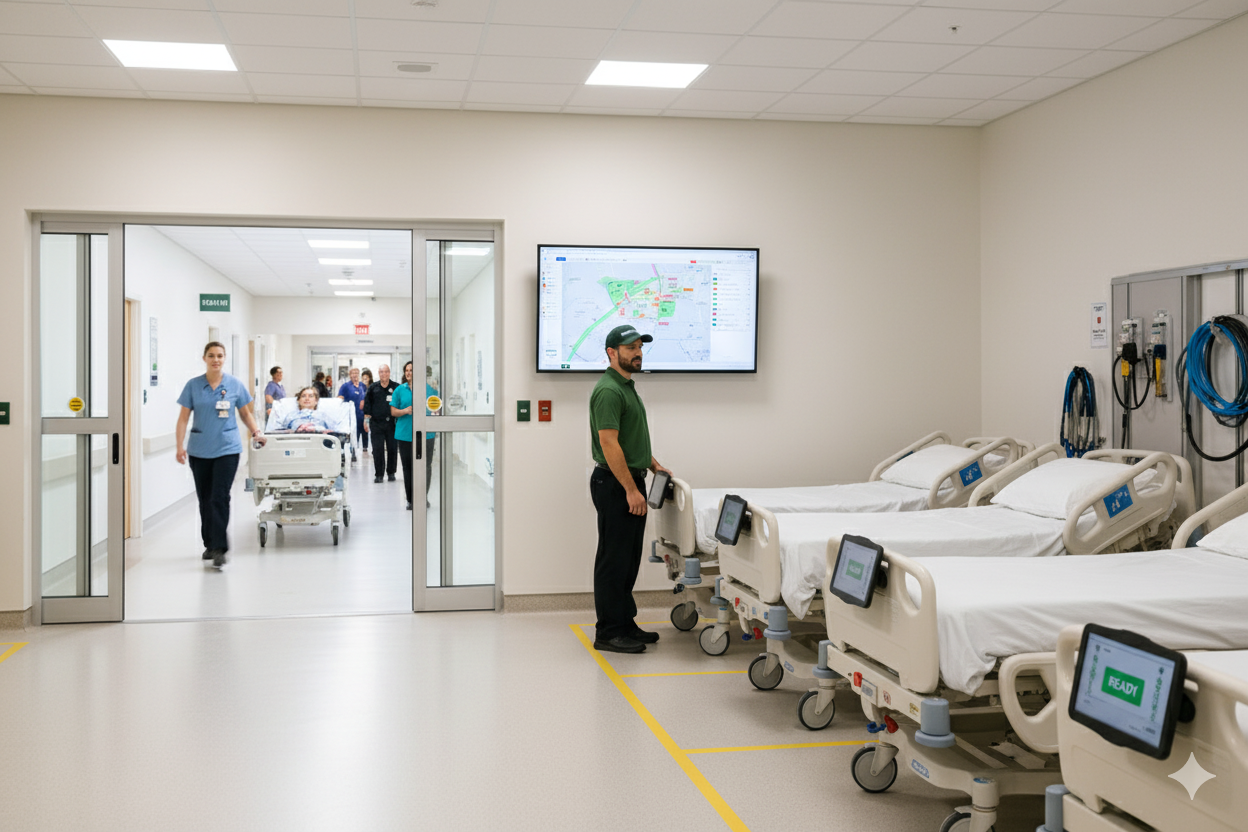
In the dynamic healthcare environment, where the spotlight often shines on cutting-edge technology and life-saving procedures, the humble hospital bed mattress plays a crucial yet frequently overlooked role in patient care. This under appreciation might be changing, thanks to compelling research by Edmond Hooker, which reveals that damaged hospital mattresses and bed frames are surprisingly common in acute-care hospitals. Hooker’s study, revealing that 72% of inspected mattresses were found to be damaged, underscores the necessity for healthcare technology, risk, quality, environmental services, and facilities managers to understand and implement an effective mattress management program.
Understanding the Role of Mattress Quality in Patient Care
Impact on Patient Satisfaction: The comfort of a patient during their hospital stay significantly influences their healing journey and overall satisfaction. A hospital mattress, often an under-considered aspect of patient care, plays a critical role in ensuring this comfort. Patients aren’t typically alarmed, or even aware, when an infusion pump in their room needs to be swapped. Likewise, they aren’t aware if surgery equipment being used on them was subject to major repair the week prior. However, a patient will always understand whether their hospital stay was comfortable or not. Patients may not grasp the inner workings of advanced medical technology, but everyone understands the function of beds and mattresses. For this reason, the patient bed and moreover, the mattress they’re using, arguably affects the inpatient experience more so than any other piece of equipment in the hospital.
Sleep and Healing: The healing power of sleep is well-acknowledged in the medical community. In the disruptive environment of a hospital, where sleep is often interrupted by clinical activity and noise, the importance of a comfortable mattress becomes even more pronounced. Quality sleep aids in faster recovery, better pain management, and overall well-being, making the mattress a key component in the healing process. Hooker’s research points to the concerning fact that a significant percentage of mattresses, some less than 4 years old, are failing prematurely, directly impacting patient rest and recovery.
Infection Control and Safety: Damaged or poorly maintained mattresses pose significant infection risks. Tears, rips, or cracks can harbor pathogens and contribute to hospital-acquired infections (HAIs). The issue of mattress cover contamination has appeared on the Emergency Care Research Institute (ECRI) Top 10 List of health technology hazards multiple times, ranking as high as the #2 overall concern for hospitals. Regular inspection, proper cleaning, and maintenance of mattresses and beds are crucial to mitigate these risks, ensuring a safe environment for patients. Hooker’s study further identified that damages often lead to fluid leakage, posing a significant infection control challenge.
Real-World Implications of Neglected Mattress Maintenance
Patient Dissatisfaction and Complaints: There are countless instances where patients have reported discomfort due to poor mattress quality, leading to complaints and lower satisfaction scores. Such feedback not only impacts a healthcare facility’s reputation but also indicates a potential improvement in patient care.
Increased Infection Risks: Neglected mattresses with undetected damages can become sources of infection, potentially leading to increased incidences of HAIs. Such scenarios underscore the need for stringent mattress inspection protocols as part of the hospital’s infection control strategy.
Establishing a Mattress Management Program
Regular Inspection and Maintenance: Echoing Hooker’s recommendations, a robust mattress management program must include routine inspections to detect and address signs of wear, damage, and cleanliness, preventing small issues from escalating. This proactive approach can identify potential issues before they escalate into serious problems.
Staff Training and Awareness: Educating the staff about the importance of mattress maintenance and the role it plays in patient care is crucial. Often, EVS workers are not diligent about noticing mattress breakdown or submitting work orders to fix it. The only way that the mattress gets the full attention it needs is by having a maintenance program that emphasizes mattress maintenance. Training should encompass methods of identifying damages and the correct protocol for reporting and addressing these issues.
Incorporating Technological Solutions: Leveraging technology to track mattress conditions, maintenance schedules, and replacement cycles can streamline the management process, making it more efficient and effective.
Challenges in Mattress Management and Overcoming Them
Resource Allocation: Often, the challenge lies in allocating the necessary resources for effective mattress management. This includes dedicating staff time, budgeting for replacements, and ensuring regular maintenance checks are conducted. Can the EVS staff be trained in what to look for? Can they handle the additional responsibility and perpetual workload of a mattress tracking system? Or, is HTM better suited to develop and maintain such a program? Does HTM have the bandwidth to run this program effectively while juggling competing challenges?
Collaboration Across Departments: Effective mattress management requires a collaborative effort between various departments within a hospital, including facilities management, HTM, clinical staff, EVS and the infection control team. Establishing clear communication channels and shared responsibilities is key to the program’s success.
The Role of External Expertise in Enhancing Mattress Management
Seeking External Assistance: Given the complexities and resource requirements of effective mattress management, seeking external expertise can be a valuable strategy. Companies specializing in hospital bed maintenance can provide the necessary skills, resources, and experience to effectively manage mattress quality and maintenance.
Conclusion: A Call to Action for Improved Mattress Management
In light of Edmond Hooker’s illuminating research, the management of hospital mattresses emerges as a pivotal aspect of patient care, demanding vigilant attention, resources, and expertise. Hospitals must recognize mattress management as a fundamental component of their patient care strategy, enhancing patient satisfaction, reducing infection risks, and achieving better overall outcomes. As the healthcare landscape evolves, the imperative for comprehensive and effective mattress management programs has never been more critical.










